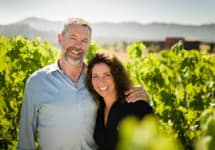Sine Qua Non Tectumque 2017
-
Robert
Parker -
Jeb
Dunnuck



Product Details
Your Rating
Somm Note
Winemaker Notes
Professional Ratings
-
Robert Parker's Wine Advocate
Tectumque means “shelter” in Latin. This wine was initially going to be called “Inconnue” (“unknown” in French), but that name had already been trademarked. “Naming wines is becoming impossible,” mentioned Manfred. “Everything has already been taken. Even, 'No Name!'” This is a blend of 38% Roussanne, 31% Petit Manseng, 18% Chardonnay, 9% Viognier and 4% Muscat. The vineyard components are 52% Cumulus Estate, 19% Eleven Confessions Estate, 18% Bien Nacido Vineyard and 11% The Third Twin Estate. It spent around 20 months aging in 9% concrete eggs, 4% amphora, 9% used barrels and 78% new French oak puncheons.
-
Jeb Dunnuck
Checking in as a blend of 38% Roussanne, 31% Petit Manseng, 18% Chardonnay, and the rest Viognier and Muscat, the 2017 White Wine Tectumque boasts a vivid gold hue as well as exotic notes of caramelized Meyer lemons, dried herbs, spice, and some distinct rocky, mineral-like nuances. With full-bodied richness and bright, racy acidity, this beautiful white is going to come together nicely with 2-3 years of bottle age. Give it plenty of air if drinking any time soon.


Sine Qua Non has its own winemaking facility in Ventura, California not far from the Santa Barbara vineyards where the fruit is sourced from. In the last few years Manfred and his wife, Elaine, have begun creating their own vineyards dedicated to Rhone varietals. Their winemaking philosophy is to work in very small batches, gravity flow, natural yeasts (unless a fermentation problem is anticipated), long lees aging for the whites and repeated racking for the reds to open them up. This is a modified explanation of a very dedicated and artistic approach to winemaking. The wines are simultaneously very rich and elegant, superbly balanced and thoroughly harmonious with food, never overwhelming.
